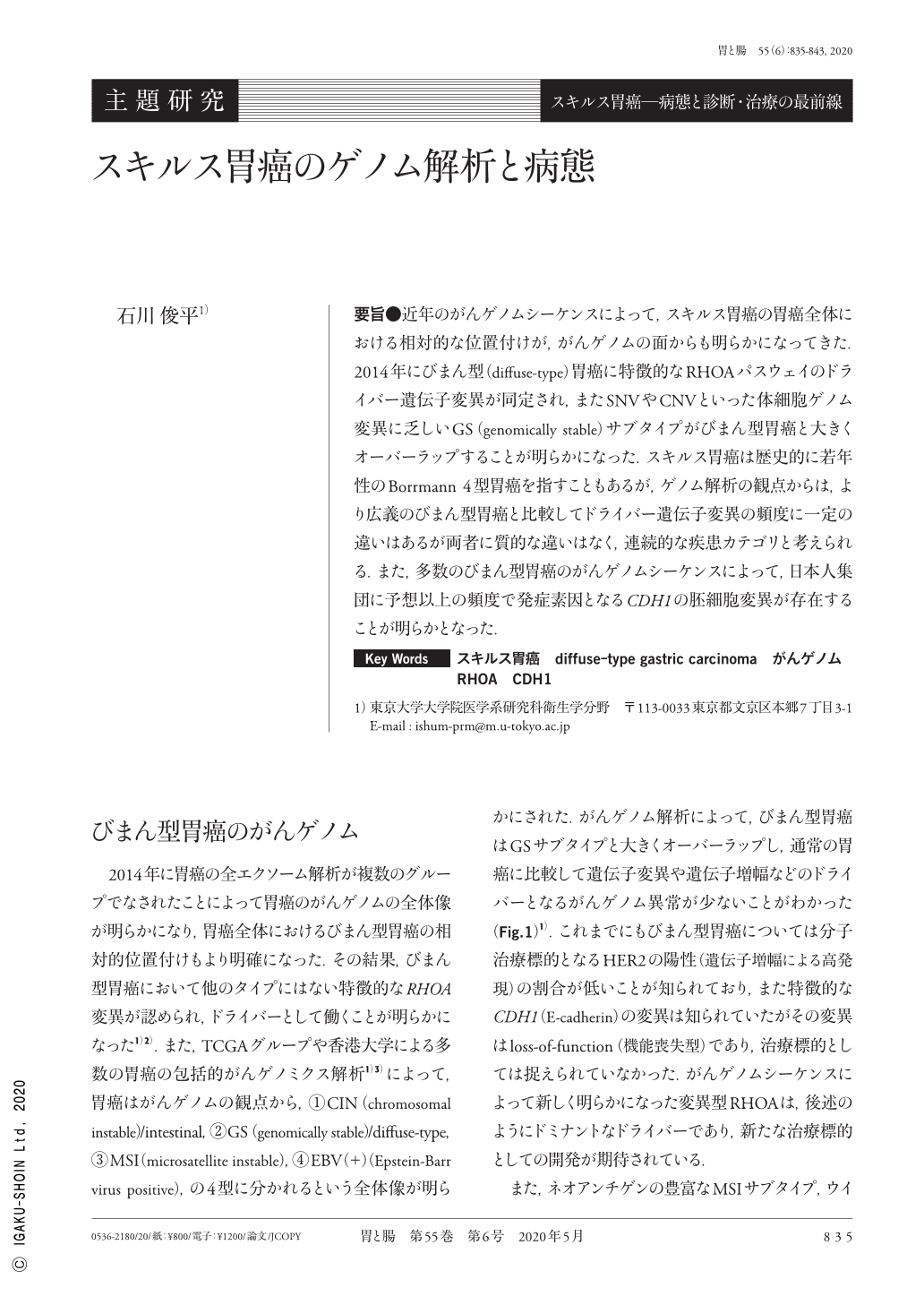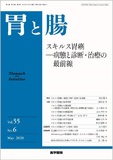Japanese
English
- 有料閲覧
- Abstract 文献概要
- 1ページ目 Look Inside
- 参考文献 Reference
要旨●近年のがんゲノムシーケンスによって,スキルス胃癌の胃癌全体における相対的な位置付けが,がんゲノムの面からも明らかになってきた.2014年にびまん型(diffuse-type)胃癌に特徴的なRHOAパスウェイのドライバー遺伝子変異が同定され,またSNVやCNVといった体細胞ゲノム変異に乏しいGS(genomically stable)サブタイプがびまん型胃癌と大きくオーバーラップすることが明らかになった.スキルス胃癌は歴史的に若年性のBorrmann 4型胃癌を指すこともあるが,ゲノム解析の観点からは,より広義のびまん型胃癌と比較してドライバー遺伝子変異の頻度に一定の違いはあるが両者に質的な違いはなく,連続的な疾患カテゴリと考えられる.また,多数のびまん型胃癌のがんゲノムシーケンスによって,日本人集団に予想以上の頻度で発症素因となるCDH1の胚細胞変異が存在することが明らかとなった.
Recent cancer genome sequencing has revealed the relative position of scirrhous gastric cancer from the genomic viewpoint. In 2014, the diffuse-type-specific Ras homolog family member A mutation was identified, and its genomically stable subtype with the least number of somatic mutations, such as single-nucleotide variant and copy number variation, was shown to greatly overlap with diffuse-type gastric cancer. Scirrhous gastric cancer has been strictly classified as the early-onset Borrmann type 4 gastric cancer ; however, genomic analysis suggested that although there are certain differences in the frequency of driver gene mutations from broadly defined diffuse-type gastric cancer, these two categories have no essential differences and are in a continuous disease spectrum. Furthermore, a recent application of large-scale diffuse-type gastric cancer genome sequencing has revealed that CDH1 mutations are unexpectedly frequent in the Japanese population.

Copyright © 2020, Igaku-Shoin Ltd. All rights reserved.


